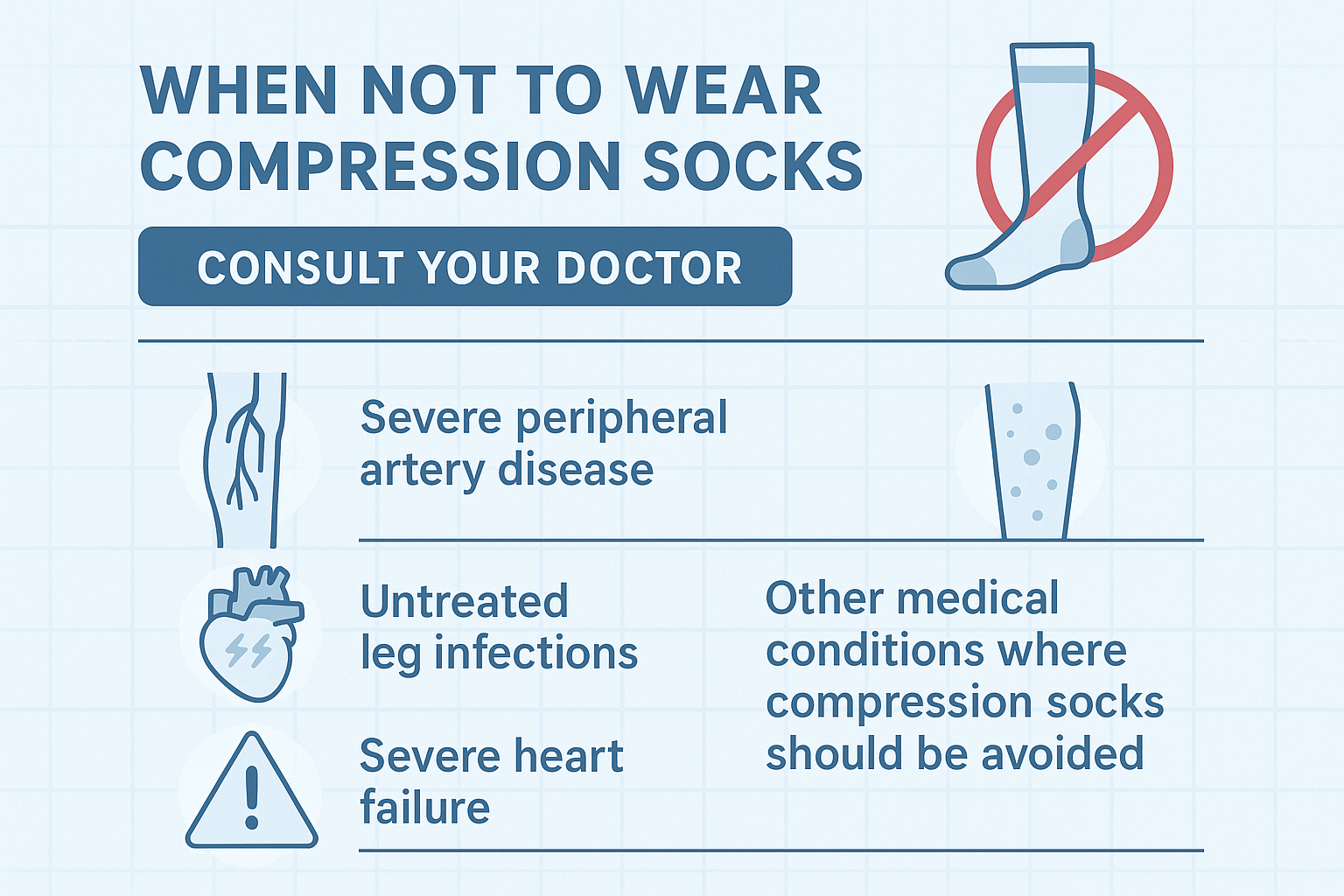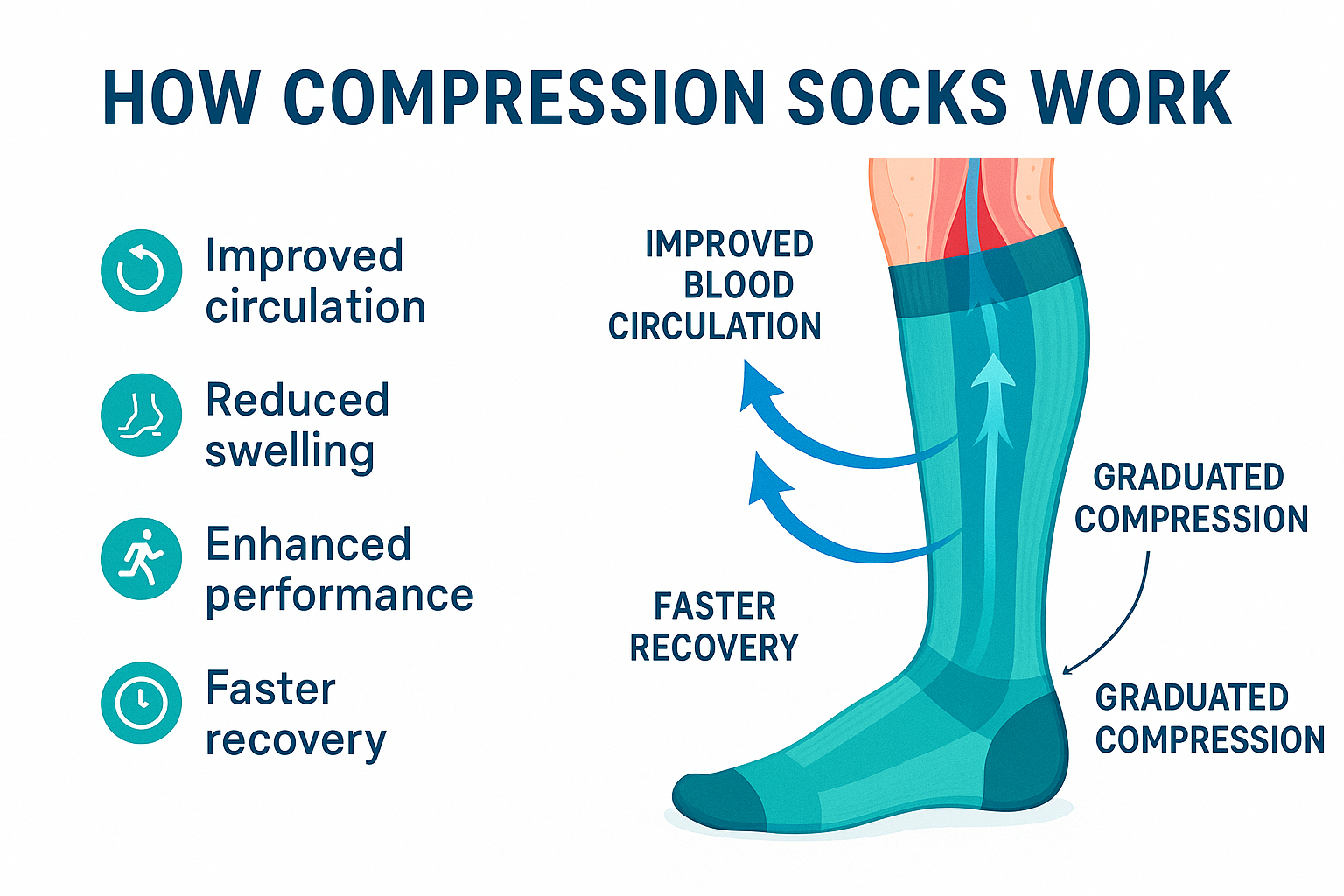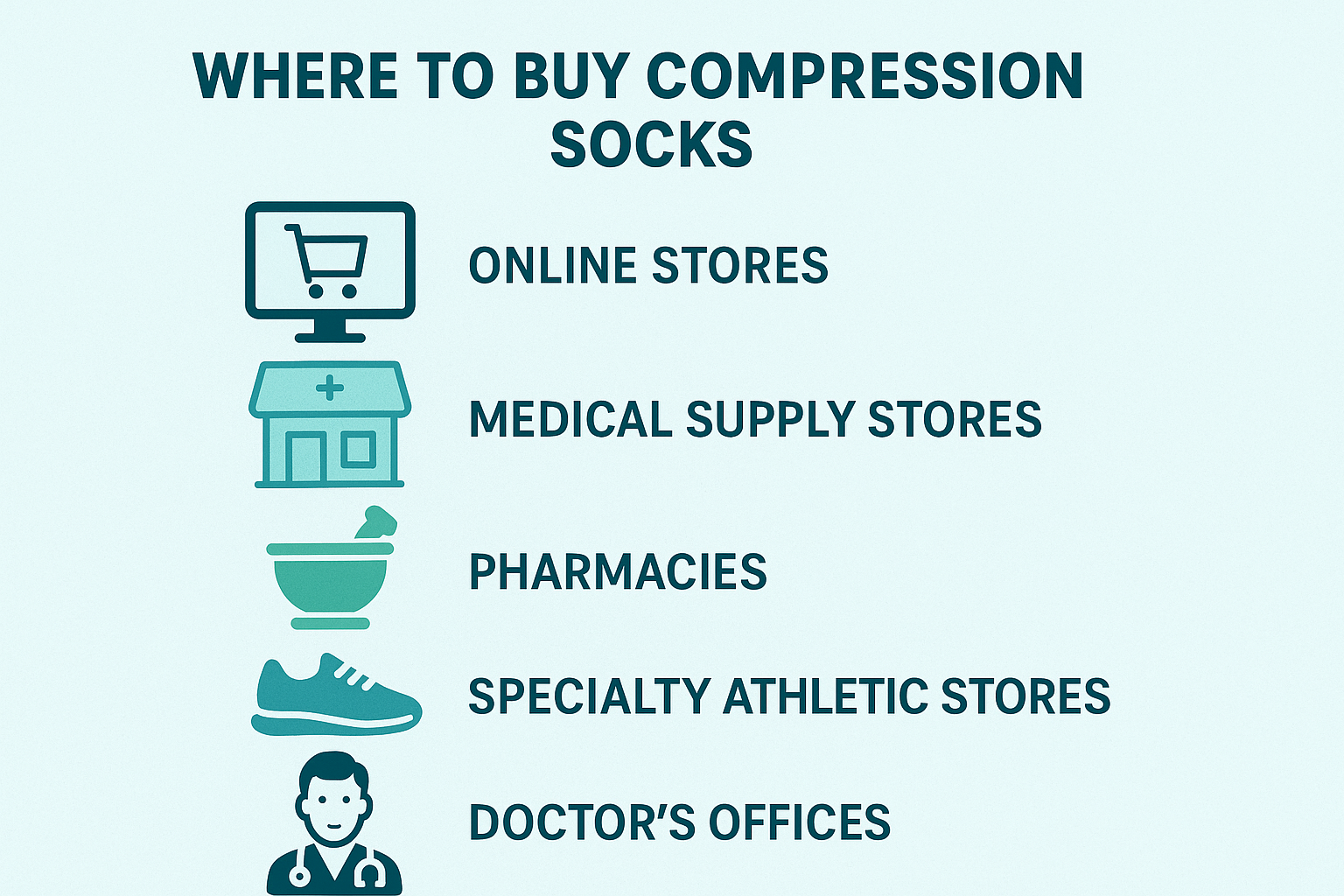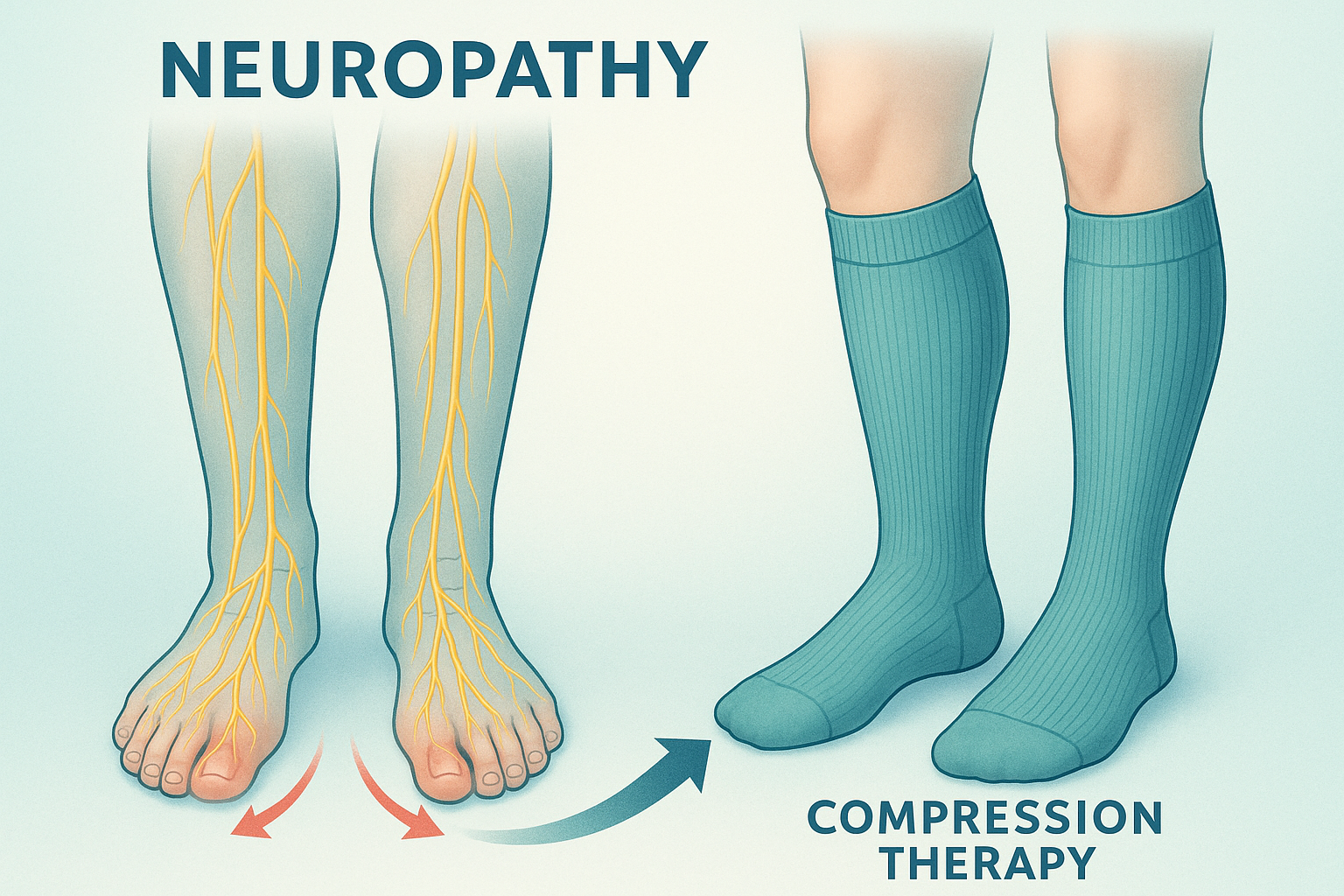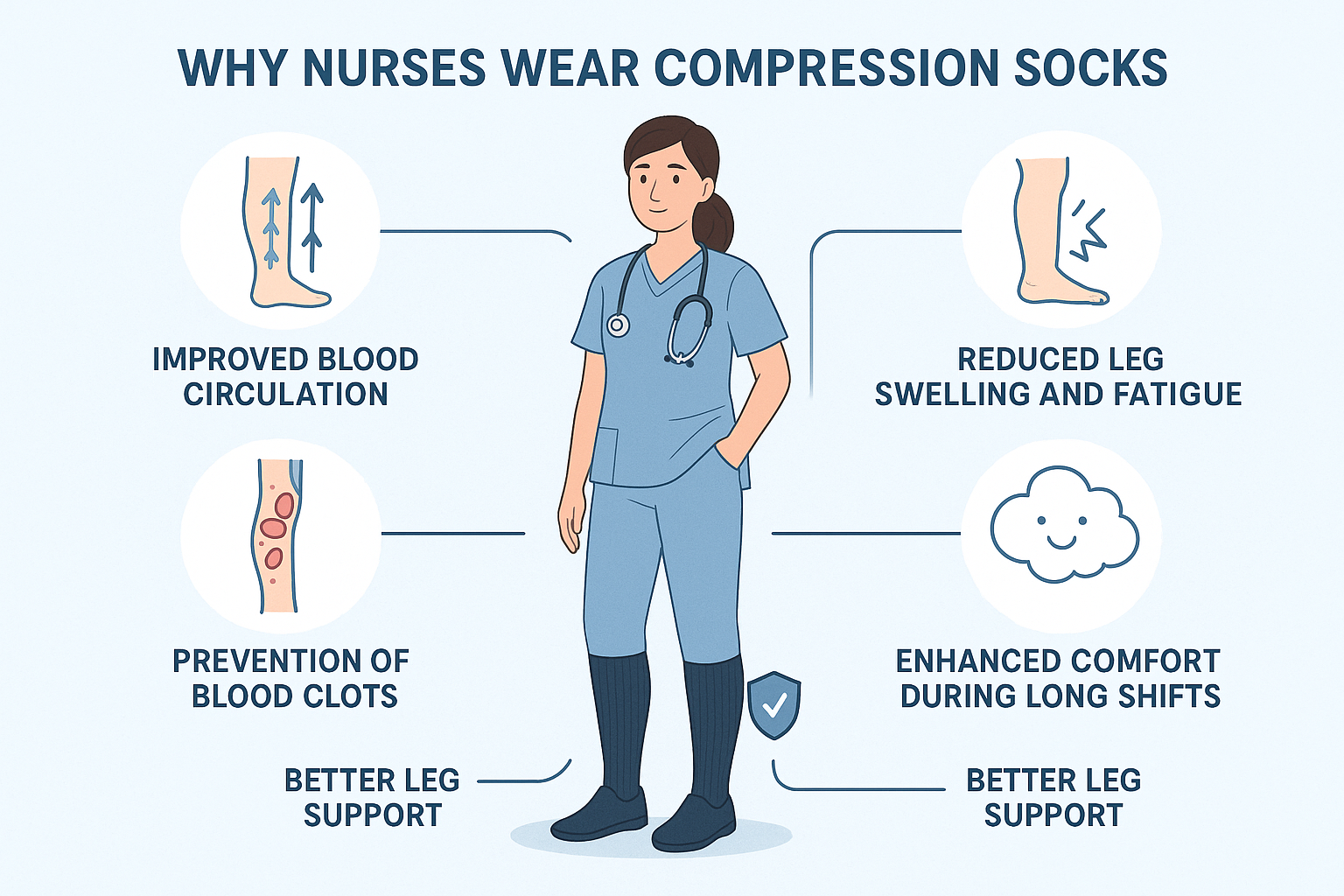
Why Do Nurses Wear Compression Socks? The Secret to All-Day Comfort and Energy
It’s no secret that nurses spend long, demanding hours on their feet. Between patient care, long shifts, and little time to sit, leg fatigue and swelling are common problems. That’s why you’ll often see nurses wearing compression socks — not as a trend, but as a proven way to protect their health and energy.
In this guide, we’ll explain why nurses wear compression socks, how they work, what benefits they offer, and how to choose the best pair for your next shift. Whether you’re a nurse, medical assistant, or healthcare student, this information will help you stay comfortable through every step of your day.
What Are Compression Socks?
Compression socks are specialized garments that apply gentle, graduated pressure to your legs and ankles. This pressure helps push blood upward toward your heart, improving circulation and preventing blood from pooling in your lower limbs.
They’re made from flexible, breathable materials such as nylon and spandex, designed to deliver firm support without restricting movement — perfect for anyone who stands all day.
Why Do Nurses Wear Compression Socks?
Nurses wear compression socks to combat the effects of long hours spent standing, walking, and lifting. These socks help maintain healthy blood flow, reduce swelling, and relieve the aching and heaviness that often come with extended shifts.
Here’s a detailed look at the main reasons compression socks are a must-have for healthcare professionals.
1. To Improve Circulation
Standing for long periods makes it harder for veins to push blood back toward the heart. Compression socks apply graduated pressure that supports venous return — keeping circulation flowing efficiently throughout the shift.
This improved circulation reduces the risk of varicose veins, spider veins, and blood clots over time.
2. To Reduce Leg Swelling (Edema)
Many nurses notice swollen feet or ankles after a long day on the floor. This happens when fluid pools in the lower legs due to gravity. Compression socks help prevent and reduce this swelling by maintaining consistent pressure and promoting fluid movement.
3. To Relieve Pain and Fatigue
Leg and foot pain are common after back-to-back shifts. Compression socks minimize muscle vibration and improve oxygen delivery, reducing soreness and heaviness. Nurses who wear them report less pain during and after their shifts.
4. To Prevent Varicose Veins
Constant standing can lead to weakened vein walls and valves, which can cause varicose veins over time. Compression socks help prevent this by supporting healthy blood flow and reducing pressure on the veins.
5. To Maintain Energy During Long Shifts
When blood circulates efficiently, your legs feel lighter and less fatigued. Compression socks help nurses maintain stamina throughout 8, 10, or even 12-hour shifts — an essential advantage when caring for patients nonstop.
6. To Support Recovery After Work
Many nurses also wear compression socks after work to help speed up recovery. The improved circulation helps clear lactic acid buildup and reduces soreness so they can start their next shift feeling refreshed.
The Science Behind Compression Socks for Nurses
Compression socks use a concept known as graduated compression. Pressure is tightest around the ankle and gradually decreases toward the knee. This design encourages blood flow upward and prevents blood from pooling in the lower extremities.
Clinical research shows that wearing compression socks can significantly reduce leg swelling, pain, and fatigue in professionals who stand for long periods — including healthcare workers. Many hospitals even recommend them as part of standard nursing attire.
Benefits of Compression Socks for Nurses
Here’s a summary of how compression socks support nurses physically and professionally:
- Enhanced blood circulation: Keeps veins healthy and oxygen flowing.
- Reduced leg swelling: Prevents fluid retention after long shifts.
- Less soreness and fatigue: Keeps legs energized and comfortable.
- Prevention of varicose veins: Reduces long-term vein damage risk.
- Improved posture and stability: Compression provides extra support for muscles and joints.
- Faster recovery: Encourages quicker muscle repair and decreased inflammation.
Choosing the Best Compression Socks for Nurses
Not all compression socks are created equal. The right pair balances comfort, support, and breathability. Here’s what nurses should look for when choosing compression socks:
1. Compression Level (mmHg)
- 8–15 mmHg: Mild compression for light support during shorter shifts.
- 15–20 mmHg: Moderate compression for standard 8–12 hour shifts (most nurses prefer this level).
- 20–30 mmHg: Firm compression for nurses with existing swelling, varicose veins, or circulation concerns (consult your doctor first).
2. Material
Choose breathable, moisture-wicking fabrics like nylon, spandex, and polyester blends. These materials help regulate temperature and prevent sweat buildup — essential for nurses constantly on the move.
3. Fit and Comfort
Compression socks should fit snugly without cutting off circulation. Avoid socks that bunch, roll, or pinch. Green Drop Compression socks are designed with flexible sizing and cushioned support for all-day wearability.
4. Style and Design
Modern compression socks come in a variety of colors and styles — from classic black and navy to fun prints that let nurses express their personality. Function meets fashion when you choose socks that make you feel good, too.
When Should Nurses Wear Compression Socks?
Most nurses wear compression socks during their entire shift, from clock-in to clock-out. Here are some helpful tips for when and how long to wear them:
- Put them on in the morning before swelling begins.
- Wear them throughout your shift for consistent circulation support.
- Remove them after work or before bed (unless prescribed overnight use).
- Wash after each shift to maintain elasticity and hygiene.
For more timing guidance, check out our article: When to Wear Compression Socks.
Tips for Nurses New to Compression Socks
- Start with mild compression: Your legs may need time to adjust to the sensation.
- Rotate pairs: Owning multiple pairs ensures you always have a clean, dry set for your next shift.
- Replace regularly: Over time, elasticity fades. Replace every 3–6 months for consistent compression.
- Combine with good shoes: Supportive footwear enhances the benefits of compression socks.
FAQs: Why Do Nurses Wear Compression Socks?
Do compression socks really help nurses?
Yes. Studies show that compression socks improve circulation, reduce swelling, and decrease fatigue during long shifts. Nurses report feeling more comfortable and energized after work.
Should nurses wear compression socks every day?
Absolutely. Regular use helps prevent leg problems and keeps you feeling refreshed throughout consecutive shifts.
What compression level is best for nurses?
Most nurses prefer 15–20 mmHg, which provides a balance of comfort and effective support without feeling too tight.
Can compression socks prevent varicose veins?
Yes. By improving circulation and reducing pressure on veins, compression socks can help prevent or slow the development of varicose veins.
Can I wear compression socks during 12-hour shifts?
Yes, and it’s recommended. Just make sure they fit properly and are made from breathable material to avoid overheating.
Related Guides
Final Thoughts: Nurses Rely on Compression Socks for a Reason
Long shifts, constant movement, and patient care take a toll on your legs. Compression socks are one of the simplest, most effective ways nurses can support their health and energy every day.
By improving circulation, reducing swelling, and preventing pain, they make a real difference in both comfort and performance. It’s no wonder compression socks have become a staple of nursing uniforms worldwide.
Ready to experience the difference for yourself? Explore the Green Drop Compression collection and find your perfect pair today — designed for nurses who give their all, every shift.



